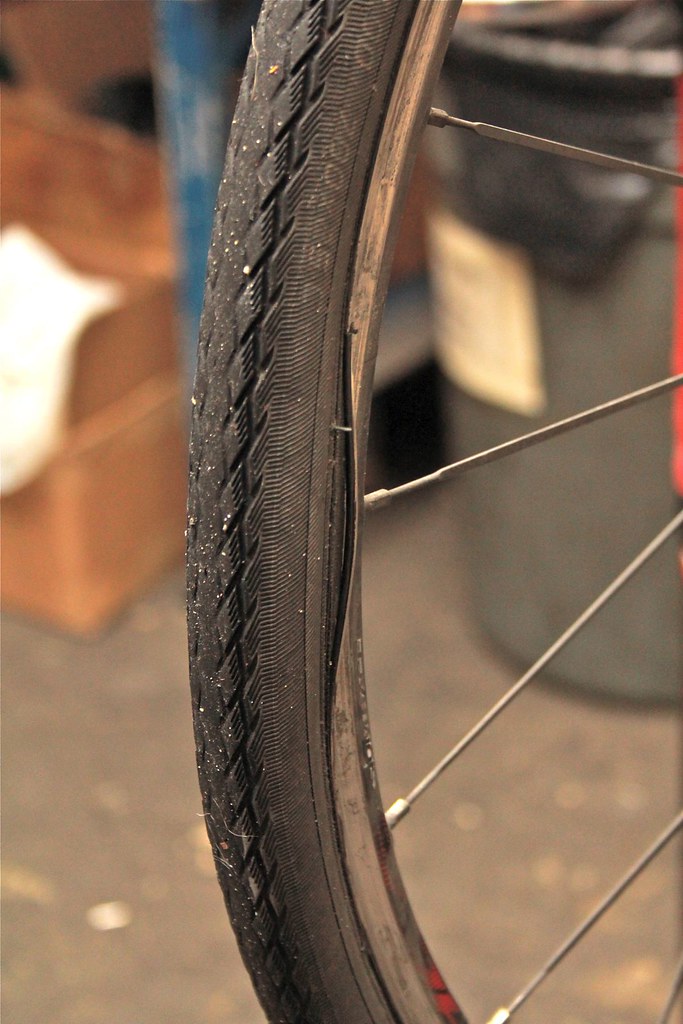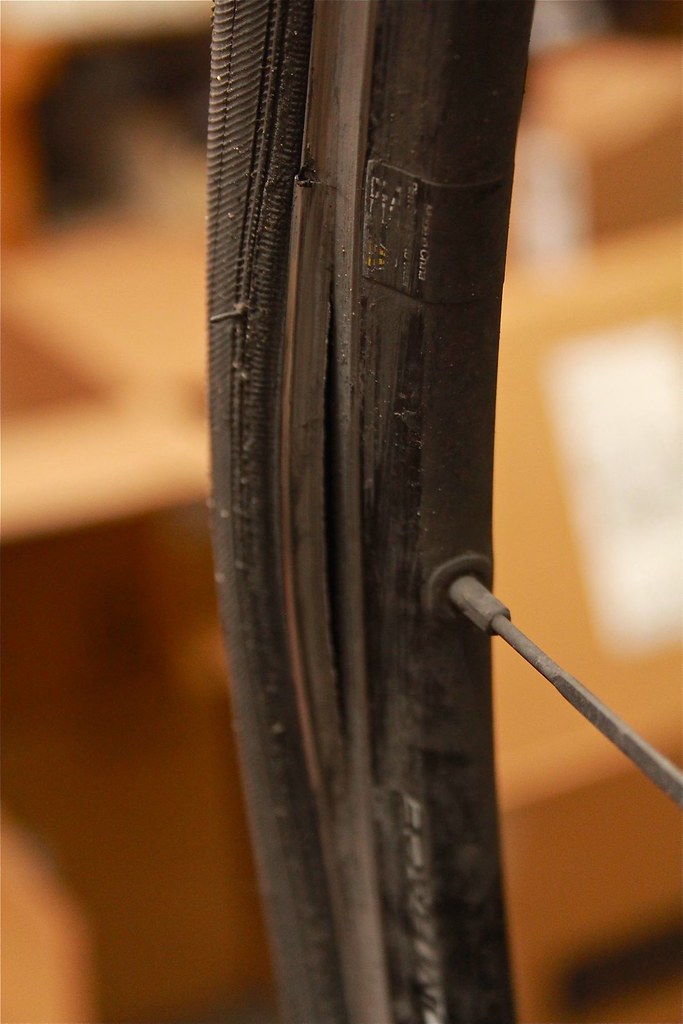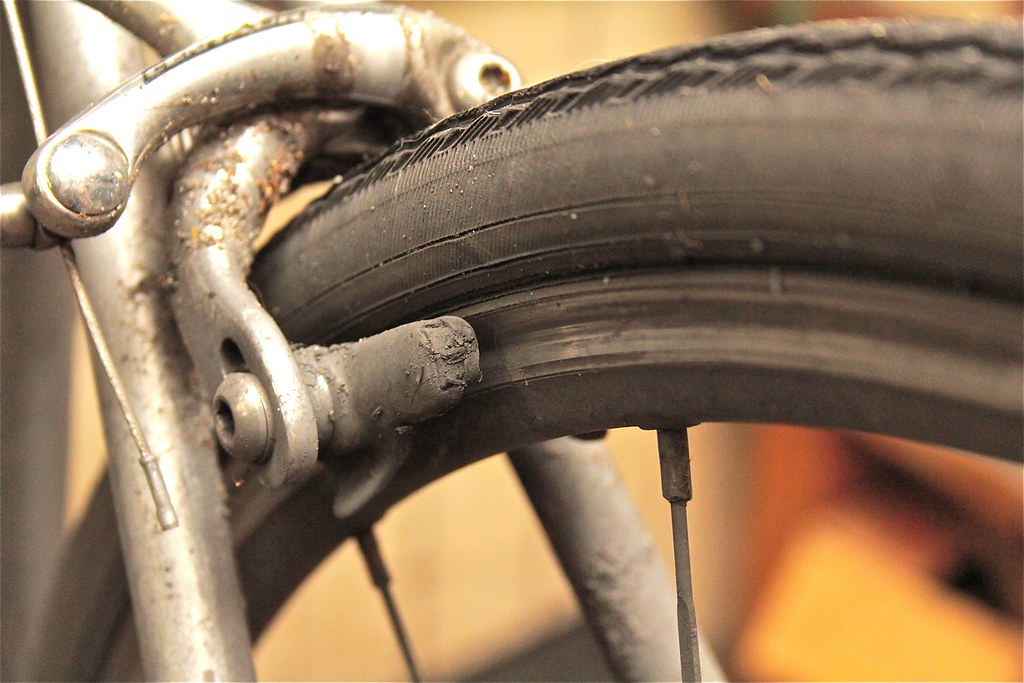Every winter I see this. Rims worn to destruction by Seattle rain bringing road grit onto the rims. The frequent stop-and-go nature of city riding has the rim brakes rubbing the wheels’ sidewalls raw with the abrasive slurry….until the sidewalls have insufficient material to resist the pressurized tyre casing thrusting the rim sidewalls apart. Many rims have a wear indicator line formed into the rim extrusion, the vanishing of which is warning to replace the rim or wheel.
There are several factors that may influence how long the sidewalls of the rim will last. Surely the tops would be precipitation, location, and use. A cyclist who logs 300 mile weeks on training rides in a flat, arid place may never wear out the sidewalls of his rims, while a commuter cyclist averaging 60 miles a week in a hilly, wet city like Seattle may kill rims within two winters. Rider weight and packed load will decrease wear life as well, since more braking force will need to be applied. Some brake pads are harsher than others, and some softer pads may be prone to embedding foreign particles that may accelerate rim wear. Choice of rim can certainly affect expected lifespan, though perhaps you wouldn’t or couldn’t substitute some rims, say a heavy duty touring rim on a lightweight racing bike.
Here are a few recommendations, based on my experience as a mechanic. Most aero-shaped alloy rims haven’t shown themselves to be particularly durable in this respect. For instance, Velocity Deep-V rims seem to be really tough in terms of vertical loads, even on tandem wheels. Howver, they don’t seem to have a lot of meat in the sidewalls. Mavic rims, especially the premium versions using what they call “Maxtal” alloy, seem to hold up pretty well compared to comparable rims from Velocity and DT; but the cheaper Mavic rims seem to be average. Kool-Stop brake pads, either black or salmon, are resistant to embedding foreign particles. I don’t have enough observations of Swisstops, but Shimano pads readily pick up grit and metal bits. Of course, disc brakes obviously sidestep the whole issue, but that subject deserves a separate conversation.
For wheels you already own, if you ride often in the rain, you should inspect your rims’ sidewalls regularly. Sidewalls that have a distinctly concave surface are cause for concern; if too they have irregularities or bulges you should stop riding them. Large volume tyres on relatively skinny rims have a lot of leverage on the sidewall. If the sidewall blows out the tyre will likely explode and the fractured rim and/or tyre casing could jam on the brake pads, stopping the wheel from rotating altogether. On a rear wheel, this could be difficult for even an alert and skilled rider to manage without falling; in the front position a devastating crash is almost guaranteed.
…We're riding townies, adventure, and mountain bikes. Find recommendations on our store page. As Amazon Associates we earn from qualifying purchases.


